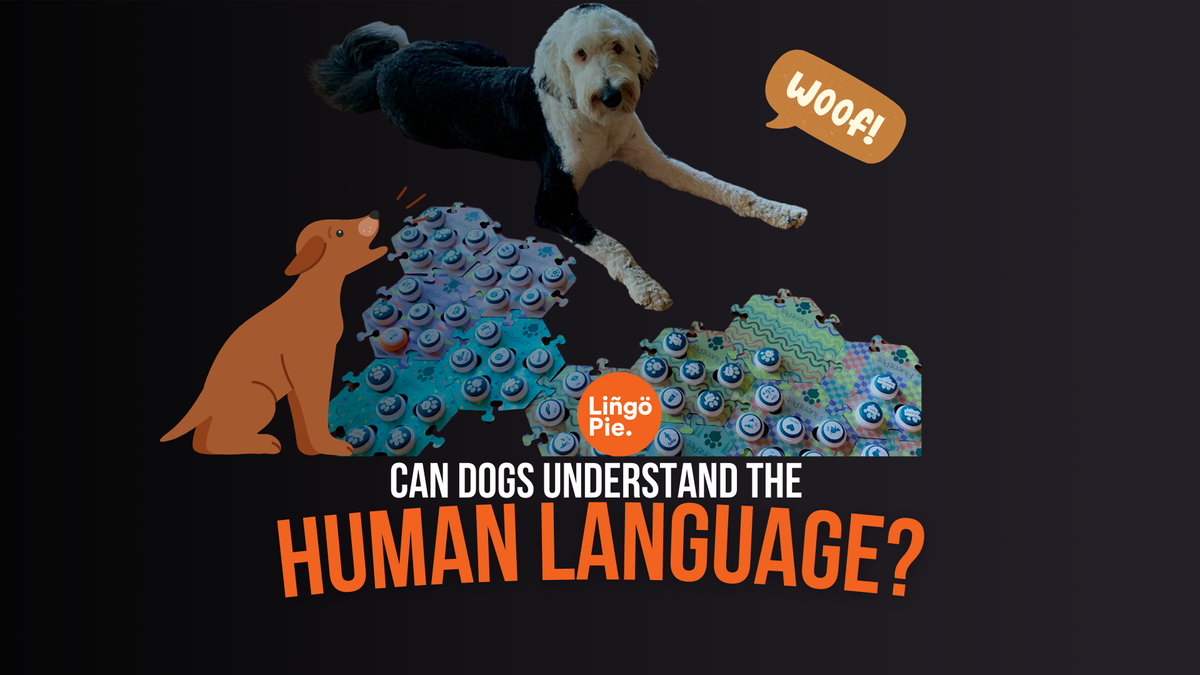Ever noticed your dog tilting their head when you speak and wondered, “Do they really understand me?”
The bond between humans and dogs is unique, partly because of our communication. But can dogs understand the human language, or are they just responding to our tone and body language?
In this blog post, we’ll learn the science behind how dogs perceive our words and tone. You’ll also learn how much your dog might understand and get tips to improve communication with your furry friend.
Table of Contents
The Science Behind Canine Communication

Dogs have an exceptional sense of hearing, far superior to humans. They can detect a wider range of frequencies, which means they pick up on subtle nuances in our speech that we might not even notice. This heightened auditory ability allows dogs to hear and interpret sounds with incredible precision, making them highly attuned to the way we speak.
While dogs can recognize certain words, they are often more responsive to the tone of voice we use. Research shows that dogs process words with the left hemisphere of their brain and tone with the right, similar to humans. However, it's the emotional tone that often carries more weight in communication. For example, a cheerful tone will likely elicit a positive response from your dog, even if the words themselves are neutral or unfamiliar.

How Do Dogs Learn Human Words?
Dogs learn words primarily through repetition and association. When you consistently pair a word with an action, object, or reward—like saying "sit" before giving a treat—your dog begins to understand the meaning behind the word. Over time, these repeated associations help dogs connect specific sounds (words) to their corresponding actions or objects.
A famous example is Chaser, the Border Collie who was trained to recognize over 1,000 words. Chaser could identify various toys by name and even understand simple sentences. This extraordinary case highlights the potential extent of a dog’s ability to learn and comprehend human language through focused training.
Bunny the Talking Dog
In recent years, research into canine communication has taken a fascinating turn, exemplified by the case of Bunny, a Sheepadoodle known as “the talking dog.” Bunny became famous on social media for using a soundboard with buttons representing words like “walk” and “play,” allowing her to seemingly communicate with her owner. This experiment isn’t just a viral trend; it’s part of a broader scientific study into how dogs might understand and use human language.
@whataboutbunny The sass🤣#BiggestFan #fyp #tiktokdogs #talkingdog #whataboutbunny
♬ original sound - I am Bunny
Researchers are examining whether dogs like Bunny can not only learn individual words but also string them together to form meaningful “sentences.” Bunny’s communication involves more than simple word association; it suggests the possibility of a more complex understanding of human language and social interactions. While Bunny’s vocabulary is still limited compared to that of a human toddler, ongoing research could offer new insights into the cognitive capabilities of dogs. This experiment highlights the potential for dogs to bridge the gap between basic commands and more nuanced communication, further deepening our understanding of how dogs perceive and interact with us.
Limitations of Canine Understanding
While dogs can learn to associate words with specific actions or objects, their understanding is limited to simple commands. Dogs generally struggle with complex sentences or abstract concepts. For example, a dog might understand "sit" or "fetch," but a phrase like "fetch the red ball from the living room" could be beyond their comprehension due to the multiple steps and specific details involved.
Dogs' language comprehension is often compared to that of a young child, typically around the age of 2-3 years. While both can understand simple words and commands, children quickly advance to understanding grammar, context, and more complex ideas—skills that dogs do not develop. This comparison highlights the differences in cognitive abilities and the inherent limitations of canine language understanding.
Communication Tips for Dog Owners
- Use consistent commands for specific actions.
- Ensure everyone in the household uses the same words.
- Apply positive reinforcement, such as treats or praise, to reinforce word associations.
- Keep commands short and simple for easier understanding.
- Recognize that dogs rely heavily on non-verbal cues.
- Pay attention to your posture, facial expressions, and gestures.
- For example, leaning forward can signal excitement, while crossing your arms might indicate you're upset.
- Being aware of your body language enhances communication and clarity with your pet.
Final Words
In summary, while dogs may not fully grasp human language, they can understand specific words, tones, and body language, enabling a remarkable level of communication between us. By using consistent commands, positive reinforcement, and being mindful of non-verbal cues, we can strengthen our bond with our canine companions and communicate with them more effectively.
Frequently Asked Questions
1. Do dogs understand when you talk to them?
Dogs can understand certain words and commands through repetition and training. They also pick up on the tone of your voice and the context, but they don’t grasp complex sentences or abstract concepts like humans do.
2. Do dogs understand that we are humans?
Yes, dogs recognize us as different from other animals. They can sense that we are humans through our appearance, scent, and behavior, and they respond to us based on their experiences and training.
3. Do dogs understand your body language?
Yes, dogs are very attuned to body language. They often rely more on your gestures, posture, and facial expressions than on your words to understand how you’re feeling and what you want from them.
4. Can dogs understand each other’s language?
Dogs use a combination of vocalizations, body language, and scent to communicate with each other. While they don't have a "language" in the human sense, they can effectively understand and respond to signals from other dogs.
Learn New Languages By Watching Movies Through Lingopie!
Who says learning can’t be fun? Grab some popcorn and immerse yourself in foreign films or binge-watch TV shows. That's the mission of Lingopie, making language learning fun and immersive!
Lingopie makes learning a new language fun and effective by using real TV shows, movies, and documentaries. It offers interactive subtitles, so you can click on any word to get an instant translation and pronunciation. If this sounds fun to you, download Lingopie from the App Store or Play Store now and get a FREE 7-day trial!









